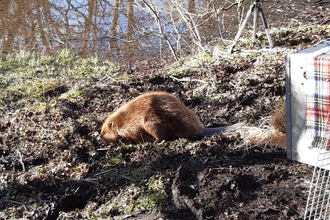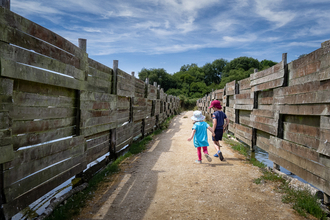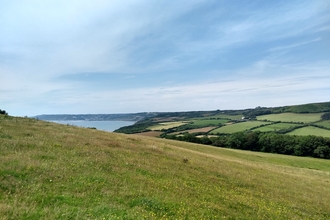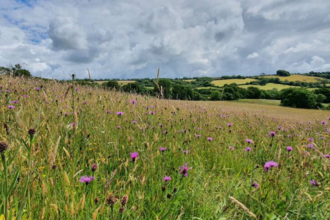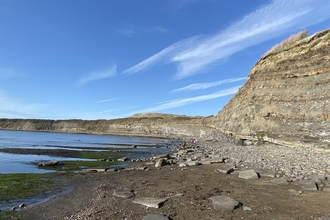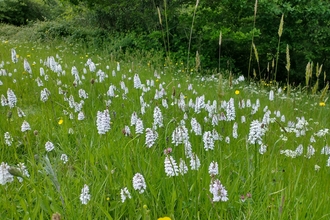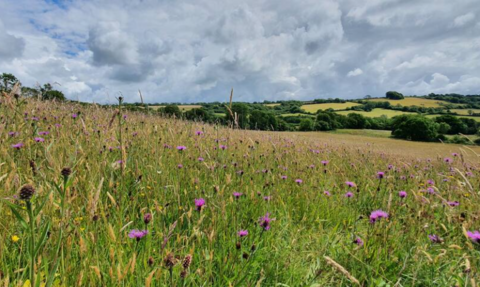
Harriet Webb / Kingcombe Meadows
Conservation work on land
Dorset Wildlife Trust is committed to protecting Dorset's distinctive wildlife and natural spaces. We manage 40 nature reserves to ensure that many special habitats, rare and uncommon wildlife have a place to thrive. Of course, wildlife need to be able to move freely through the landscape and so we work closely with other landowners and conservation organisations to restore habitats over larger areas of land around our nature reserves and within river catchments. We also provide advisory services for farmers, businesses, local councils, schools and communities to help manage land for wildlife.
Managing our nature reserves
From Dorset's precious open heaths to ancient woodland, wetland and grassland, Dorset Wildlife Trust manages 40 nature reserves for wildlife and people. Nature reserves provide a safe place for wildlife to live, feed, breed, bring up their young. Through careful and sensitive year-round land management, we restore, maintain and create habitat that we know species need to thrive. We restore ponds and manage hedgerows which the great crested newt needs to breed and feed. We protect and restore wet and boggy places to try and reverse the decline in one of our rarest butterflies, the marsh fritillary. And we manage grasslands and meadows in the traditional way with grazing animals to provide the mix of habitat which is so vital for many species including foraging bats such as the now extremely rare grey long eared bat and the protected lesser horseshoe bat.
Every day, our Reserves staff are out on the reserves managing habitats. We do this to encourage the greatest diversity of species on our sites, many of which simply do not have anywhere else to go. If we left our woodlands unmanaged, we would soon lose the diversity of species that a mixture of woodland habitats supports. For example, creating clearings by removing some trees lets more light into the wood. This allows wildflowers and other plants to emerge which support insects. In turn, they provide a food source for animals further up the food chain like birds and small mammals. The clearings also allow tree species to regenerate, creating a diversity of ages in the tree canopy and therefore increasing the sustainability of the woodland. Similarly if we left our grasslands to their own devices, they would eventually become woodland. Our grazing regime combined with regular cutting ensure we are protecting many species of wildlife.
How we're making a difference
Nature is incredibly resilient and with a little help, it can bounce back. Here are some success stories from Dorset's nature reserves:
Heath tiger beetle
In Dorset, our Sopley Common reserve has one of the largest populations of heath tiger beetles in the south of England. The vital piece of the habitat puzzle for this species is bare ground so we've been working to create 15% more bare ground on the site than 10 years ago which has been rewarded with the highest count of this species for 12 years in 2022.
Ladybird spider
The ladybird spider is the rarest spider in the UK and was thought to be extinct in the UK until the 1980s when it was rediscovered in Dorset. Through creation of the correct habitat structure, microclimatic conditions and translocations, our nature reserves now support around 30% of the UK population in 2022.
Pillwort
Pillwort is the UK's only native aquatic fern, with the only Dorset colony on our Winfrith Heath reserve. Our work to create shallow, seasonally inundated pools has been helping to ensure the species thrives. It has now increased its range across the site, spreading into the newly created pools.
Making space for nature in Dorset
Whilst our nature reserves are vitally important to protect threatened species and habitats, wildlife needs more space to disperse and re-colonise our landscape, so we work with landowners, communities and other conservation organisations in Dorset to restore, recreate and reconnect wildlife-rich spaces and corridors across rural and urban areas.

